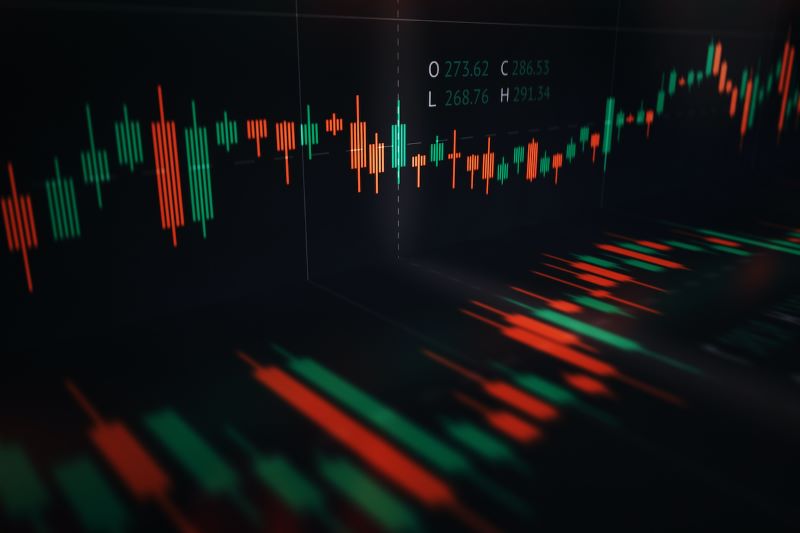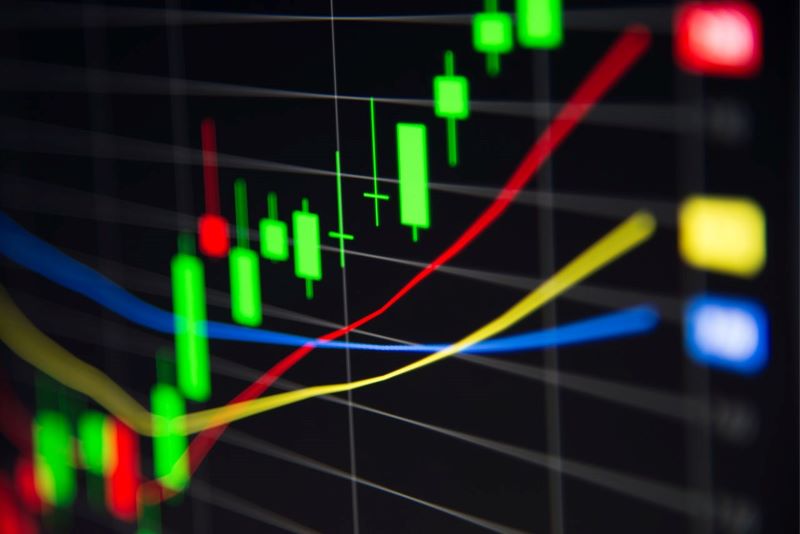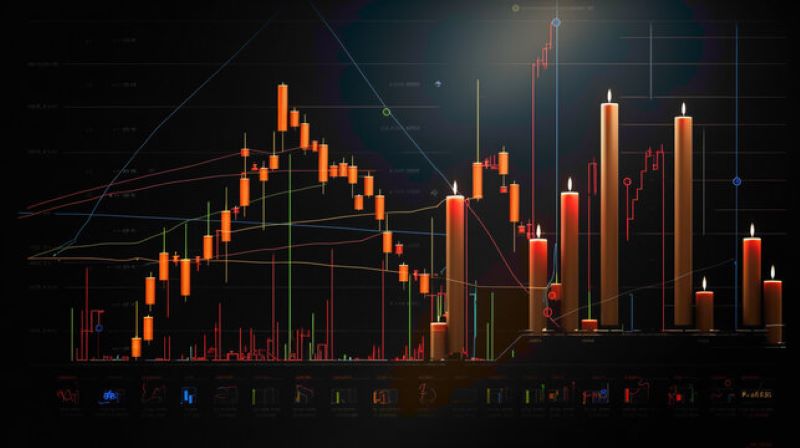What is a Doji candle and why should traders pay attention to it? This unique candlestick pattern can provide valuable insights into market sentiment and potential price reversals. In this article, we’ll explore the characteristics of a Doji candle, its various types, and how to interpret it effectively for informed trading decisions.
What is a Doji Candle?
A Doji candle is a type of candlestick pattern in technical analysis used to assess market sentiment and can indicate potential changes in price trends. This signifies a stalemate between buyers and sellers.

Types of Doji Candles
Doji candles can be classified into different types based on their shape and position on the chart:
- Standard Doji: This is the most common type, with a very small body and long upper and lower wicks. It indicates uncertainty in market sentiment.
- Long-Legged Doji: Also has a small body but with very long wicks, signifying a large price fluctuation during the trading session. This often indicates significant volatility.
- Gravestone Doji: Has a small body at the bottom and a long upper wick, indicating that sellers controlled the market for a certain period. This can signal a bearish reversal.
- Dragonfly Doji: Opposite to the Gravestone Doji, it has a small body at the top and a long lower wick. This indicates that buyers dominated and can signal a bullish reversal.
Understanding the different types of Doji candles is crucial in comprehending what is a doji candle and its potential implications for price action.
Meaning of a Doji Candle
A Doji candle is often seen as a warning sign of a trend reversal or continuation. When a Doji appears in an uptrend, it may indicate that the trend is weakening and a reversal is possible. Conversely, if a Doji appears in a downtrend, it may suggest that selling pressure is weakening, creating an opportunity for a bullish reversal.
Traders often combine Doji candles with other indicators or candlestick patterns to confirm trends or reversal signals. Recognizing Doji candles in the context of other signals helps increase the accuracy of trading decisions.
Understanding what is a doji candle and its implications can be a valuable tool for traders in assessing market sentiment and making informed trading decisions.
The Structure of a Doji Candle
A Doji candle is a unique candlestick pattern in technical analysis, notable for its distinct shape and meaning. To understand the structure of a Doji candle better, let’s analyze its components and how it is formed.

Main Components of a Doji Candle
- Body: A Doji candle is characterized by its very small body, indicating that the opening and closing prices are almost equal. The body does not take up much space on the chart, reflecting market uncertainty during that period.
- Wick: Doji candles typically have upper and lower wicks that are longer than the body. These wicks represent the price fluctuation throughout the candle’s timeframe.
- Upper Wick: This part shows the highest price the asset reached during the candle’s timeframe.
- Lower Wick: This part shows the lowest price the asset reached during the candle’s timeframe.
Meaning of the Doji Candle Structure
- Uncertainty: The structure of a Doji candle indicates a struggle between buyers and sellers. When the opening and closing prices are close together, it suggests that neither side has clear control. This uncertainty is a key characteristic of what is a Doji candle.
- Reversal Signal: Doji candles often appear in uptrends or downtrends, and they can signal a potential reversal of the current trend. However, traders need to combine them with other factors to confirm this signal.
Types of Doji Candles
There are several types of Doji candles, each with different meanings and appearances:
- Standard Doji: This is the basic Doji, with a small body and long wicks, representing uncertainty on both sides.
- Long-Legged Doji: This Doji has longer upper and lower wicks, indicating larger price fluctuations and higher uncertainty.
- Gravestone Doji: This type appears in an uptrend and has the body at the bottom with a long upper wick. It can signal a bearish reversal.
- Dragonfly Doji: Opposite to the Gravestone, the Dragonfly Doji appears in a downtrend with the body at the top and a long lower wick, potentially signaling a bullish reversal.
Understanding the structure and variations of Doji candles is crucial in comprehending what is a Doji candle and its potential implications for price action.
How to Identify a Doji Candle on a Chart
Identifying a Doji candle on a price chart is a crucial skill for traders to spot market uncertainty and potential trend reversals. Understanding what is a Doji candle and its visual characteristics is the first step in this process.

Observe the Candle Body
“What is a Doji candle” is characterized by its very small body, with the opening and closing prices almost equal. To identify it, pay attention to the following:
- Small body: The body of a Doji is usually very short, potentially barely visible on the chart. A small body with a length less than 25% of the candle’s wick is a typical sign.
- No large body: If the candle body is large or long, it’s likely not a Doji. Doji candles only appear when the market cannot establish a clear trend.
Examine the Candle Wicks
The wicks of a Doji are usually long and distinct, and can be present both above and below the body:
- Long upper and lower wicks: Doji candles often have longer wicks, indicating significant price fluctuations. These wicks can be twice or even three times the length of the body. This reflects the struggle between buyers and sellers during that period.
- Position of the wicks: The upper wick shows the highest price the asset reached during the timeframe, while the lower wick shows the lowest price. Identifying the length of these wicks also helps assess the possibility of a reversal.
Consider the Doji’s Position in the Price Trend
- Previous trend: Doji candles often appear in uptrends or downtrends. If a Doji appears after an uptrend, it could signal a bearish reversal. Conversely, if a Doji appears after a downtrend, it could signal a bullish reversal.
- Market context: Sometimes, Doji candles can appear during consolidation phases, where the price has no clear trend. Identifying the position of the Doji in this context can help you assess the likelihood of trend continuation or reversal.
Combine with Other Technical Indicators
To identify “What is a Doji candle” more accurately, you can combine them with other technical indicators:
- RSI indicator: If the RSI is in overbought or oversold territory along with the appearance of a Doji, this can reinforce the possibility of a reversal.
- Moving averages (MA): When a Doji candle appears near important moving averages, it may indicate that the price is seeking a reversal point.
The Impact of Doji Candles in Market Analysis
Doji candles are not just a morphological element in technical analysis but also have a profound impact on how traders and investors make decisions in the financial markets. Understanding what is a Doji candle and its implications can significantly influence trading strategies.

Market Sentiment Indicator
What is a Doji candle? – It represents uncertainty and conflict between buyers and sellers. When they appear, they reflect a hesitant market sentiment, unable to decide on the next trend. This can lead to:
- Conflict among traders: Traders may be unsure whether to buy or sell, leading to unstable price fluctuations. This sentiment can create a period of unclear trading activity.
- Formation of trading opportunities: This uncertainty can open up opportunities for quick-witted traders who recognize that the market may move in a certain direction after a Doji appears.
Potential Reversal Signal
Doji candles are often seen as a potential signal for a trend reversal. When they appear after a strong uptrend or downtrend, traders often consider them as an indicator to:
- Identify trend changes: The appearance of a Doji in an uptrend may indicate weakening buying pressure, while a Doji in a downtrend may suggest that selling pressure is starting to weaken. From this, traders can make decisions to adjust their trading strategies.
- Combine with other indicators: When a Doji appears along with signals from other technical indicators, such as moving averages or the RSI, it can further reinforce the possibility of a reversal, increasing the reliability of this signal.
Confirmation of Other Price Patterns
What is a Doji candle is not just a standalone signal but can also be combined with other price patterns, thereby increasing the validity of the analysis. The appearance of a Doji can:
- Strengthen signals from other candlestick patterns: When a Doji appears along with other candlestick patterns like Hammer or Shooting Star, it can reinforce the expected trend or reversal.
- Facilitate subsequent patterns: “What is a Doji candle” can lead to the formation of other price patterns, such as reversal or continuation patterns, providing traders with a more comprehensive view of the market trend.
Identifying Entry and Stop-Loss Points
Doji candles can also play an important role in identifying entry and stop-loss points. Traders can use Doji candles to:
- Determine resistance and support levels: The presence of a Doji at key price levels may indicate that the market is seeking a reaction at these points, helping to identify potential entry points.
- Set stop-loss orders: Traders can use the position of the Doji to determine a reasonable stop-loss level, minimizing risk in case the market moves against their predictions.
Understanding what is a doji candle is essential for traders looking to navigate the complexities of market uncertainty. As emphasized by Blockchain Global Network, recognizing and interpreting doji candles can enhance your trading strategy, providing valuable insights that can lead to more informed decisions in an ever-fluctuating market landscape.

RELATED POSTS
Bitcoin Charlotte and 3 Expected Growth Signals
Bitcoin Charlotte is not just...
Robotics vs AI vs Machine learning – The Future of Technology
Robotics vs AI vs Machine...
What is Particles? Exploring the details of the project
In the rapidly growing blockchain...
Inflation is down why isnt crypto rallying today?
Inflation is down why isnt...
Treasure DAO to Sunset Its Layer-2 Blockchain Treasure Chain by May 30, 2025 Amid Strategic Refocus
May 6, 2025 – In...
HOT!!! Notcoin Accuses Bidget of Lying!
Notcoin Accuses Bidget of Lying!!!...
4 Reasons You Should Pay Attention to Banana Zone Crypto Today
Banana Zone Crypto is gaining...
Role of Blockchain Security Audits: Your Crypto Safe Haven?
Enhance Blockchain Security with Audits....
What is Consensus? Consensus Mechanisms in Blockchain
In the world of cryptocurrency,...
Future of On-Chain Code Audits: Revolutionizing Collaborative Cybersecurity
Enhance blockchain security with on-chain...
Elastic Chain: The future of Layer-2 Blockchain networks
Elastic Chain ushers in a...
Dawn Airdrop – Unique Reward Mechanism and How to Participate
Dawn Airdrop stands out with...
What is the trading range of Kaspa standard deviation?
Are you interested in Kaspa...
Unlocking Value in Play to Earn Blockchain Games
The gaming landscape is undergoing...
How does blockchain technology help organizations when sharing data
Wondering “How does blockchain technology...
U2U Token Price Prediction: Understanding the Factors Behind Its Future Growth
The world of cryptocurrency is...